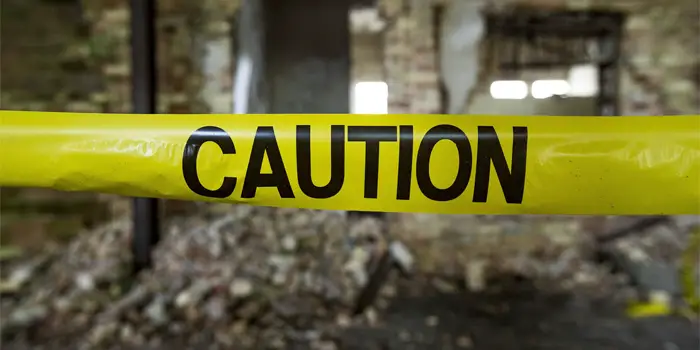The process of managing risk involves thinking through the risks which may possibly occur in the workplace and implementing health and safety procedures designed to control the risks identified.

Working definition of hazards and risks
Hazard: ‘anything that could possibly cause harm’. For example, an open drawer, working at height using a ladder, use of electricity, or the use of inherently harmful chemical substances.
Risk: The risk is ‘the likelihood or possibility, high or low, that someone could suffer harm’ from the hazards specified above, or from other hazards, plus some explanation of the possible extent of harm.
What is a risk assessment?
According to HSE (the Health and Safety Executive), a risk assessment is defined as ‘a careful examination of what in your work and workplace could cause harm to people so that you can weigh up whether or not you have taken enough precautions or should do more to prevent harm’.
As such, a formal risk assessment supports the process of identifying hazards, considering their potential seriousness, and adopting sensible measures to control the risk.
This procedure can be completed in five phases:
Phase 1: Hazard identification
Organise and classify your work activities in the light of: Location; Activity types; Use of equipment; People.
Specify the hazards: Physical – vibration and noise; Psychological – occupational mental stress;
Biological – dangers of bacteria; Chemical – glues, paints and solvents, vehicle exhaust and other fumes.
Phase 2: Specify who may be endangered, and how
With each identified hazard, clarify those who may suffer harm. For example, pupils, staff or visitors. In addition, also clarify the possible types of injury, or health issues, to be expected.
Phase 3: Risk evaluation and precautionary measures
Assess the likely occurrence of each specified hazard and indicate the risk control measures adopted. Also indicate whether the hazards have been eliminated or reduced. Where task controls are deemed inadequate, indicate any further measures which are necessary.
Where further action is identified, also record: the projected completion date, and detail the person responsible for completion. When this further action is subsequently completed, the completion itself must also be separately noted.
Phase 4: Recording and implementing conclusions
Converting your risk assessment into good health and safety practices will help protect your staff in the workplace. And recording the outcomes of your risk assessment, and distributing this information to your staff, also cultivates a positive health and safety culture.
Phase 5: Assessment review and appropriate updating
All risk assessments should be reviewed annually and updated where necessary. And should there be significant workplace changes, procedural changes, new staff, or if an accident/incident should occur, then these instances alone will trigger a separate review.
Different types of risk assessment
The three types of risk assessment are: generic, specific and dynamic risk assessments.
Generic activities: these are activities where the identified hazards and associated risks are broadly similar each time they occur, even though the activities may be scheduled for multiple locations and different times – for example, daily classroom registration procedures. A generic risk assessment can be formulated to act as general guidance for these occasions.
Specific risk assessments: this type of assessment can apply where, for instance, the hazards and risks are activity-specific. The need for this type of assessment can also arise where legislation applies – for example with new and expectant mothers, or where there are COSHH (Control Of Substances Hazardous to Health) issues to consider.
Dynamic risk assessment: this type of assessment remains a continuous procedure such as specifying the hazards which may arise in an emergency situation, then carrying out a risk assessment before initiating action to remove, or substantially reduce the identified risks down to a generally acceptable level.
CSCS Test and Risk Assessments
Now that you know more about risk assessments, here are some key concepts you should understand regarding the CSCS test and risk assessments.
Risk assessments are created to help control risks and minimize hazards in the workplace.
Your employer is responsible for risk assessments at work. You are not required to write your own risk assessments.
All risk assessments should identify the hazards related to the task you need to carry out, and they should list the safe way of carrying out these tasks.
